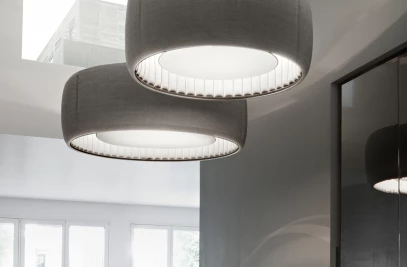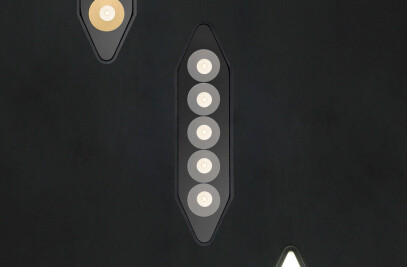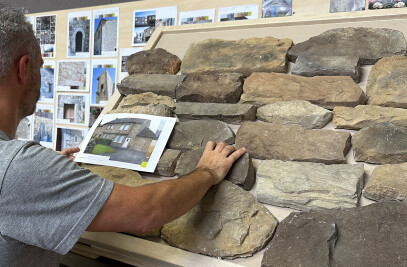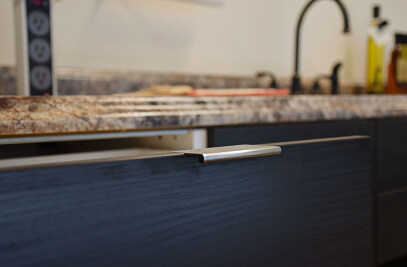The restructuring project involved an apartment located on the third floor of a small building in the 5th district – Romito area - not far from Santa Maria Novella station. The presence of an entrance and some excessively spacious rooms made it necessary to have a more rational distribution of spaces to meet the client's needs.

The project took shape around a central service core with a material appearance, covered with a cement-effect wainscoting; inside it, there is a technical room serving as a storage space, a wardrobe for seasonal changes, a shoe rack, and a laundry cabinet.

The bedrooms and bathrooms are separated from the central block by a corridor that winds around it, creating interesting views of the living room. The sleeping area is separated from the living area by two aluminum and glass doors positioned in an offset manner, leaving the entrance and the coat rack in direct connection with the living area and separating the children's room from the adjacent kitchen.


The living area appears as a single large space: visual continuity between the living room and the kitchen is ensured as the two functions are separated only by a peninsula cabinet; to emphasize the depth of the optical cones, on the opposite side of the living room, a system of oak slats separates and reveals a small area designated for smart working. In this way, each function is well distinct but never separated from the adjacent ones, avoiding excessive compartmentalization of space. The false ceiling, the pelmet along the windows, and the design of artificial lighting contribute to giving a unified perception of the living area.


The choice of glass doors further expands the views; from the living room, the material block is perceived as an island with an imposing mass, alongside the lightness of the doors that reveal glimpses of the rooms. This dichotomy is found in the choice of materials and colors: the grays of the central cement-effect block and the background wall of the living room, hiding the guest room, interact with the oak of the parquet and slats, creating a pleasant chromatic balance. The design of the carpentry work allowed for optimal use of space through an organic language.


The renovation intervention was an opportunity for energy efficiency: in addition to replacing fixtures with monobloc systems with insulated frames and casings, heating, and cooling were entrusted to a ceiling radiant system powered by a heat pump and integrated with a controlled mechanical ventilation system that contributes to air exchange, improving its quality and recovering heat that would otherwise be lost. The completed works have allowed the apartment to move from class G to class A2, resulting in economic savings and an improvement in living comfort.













































